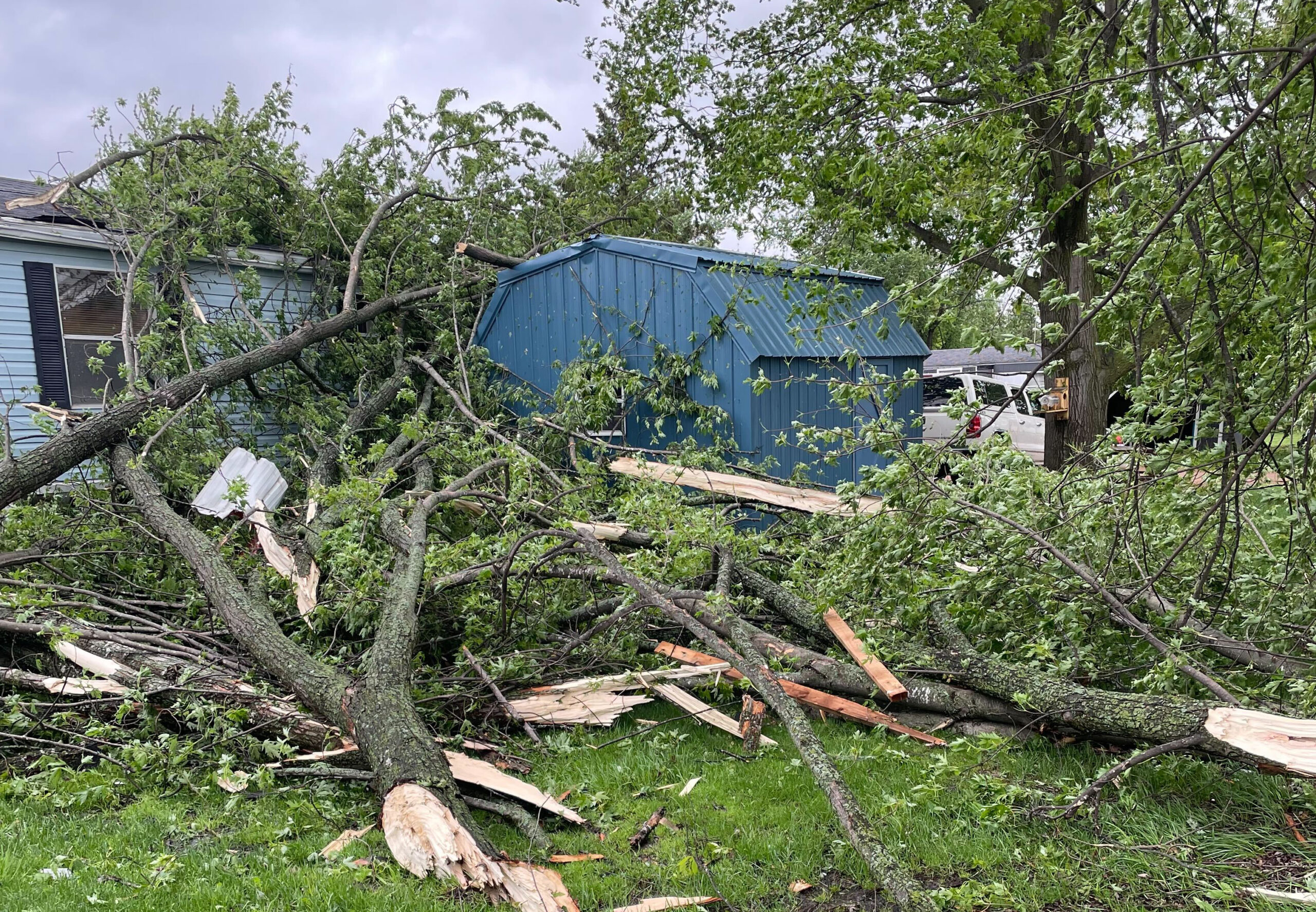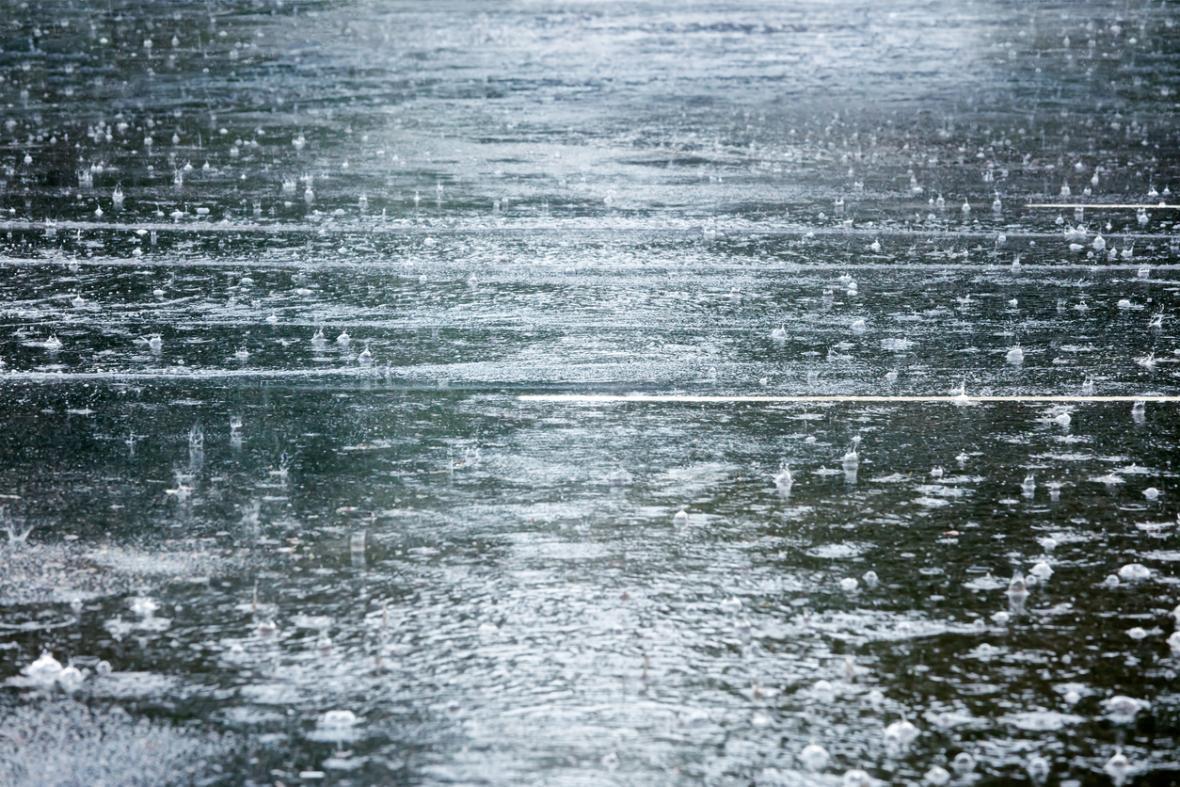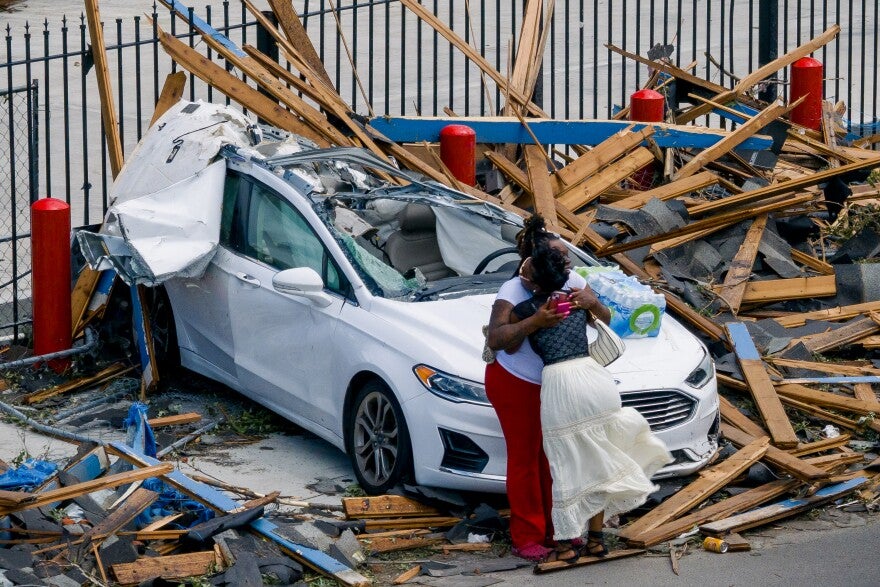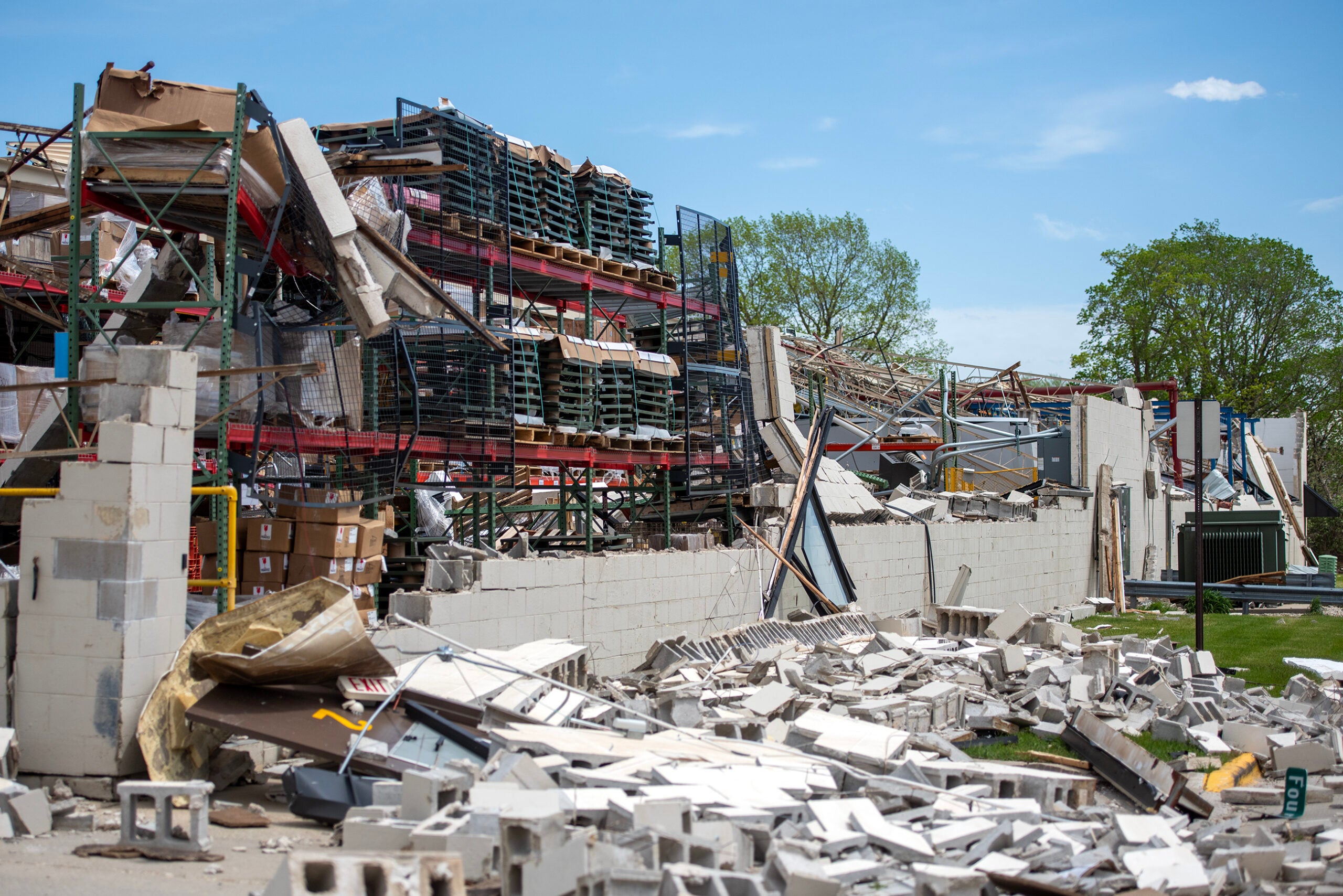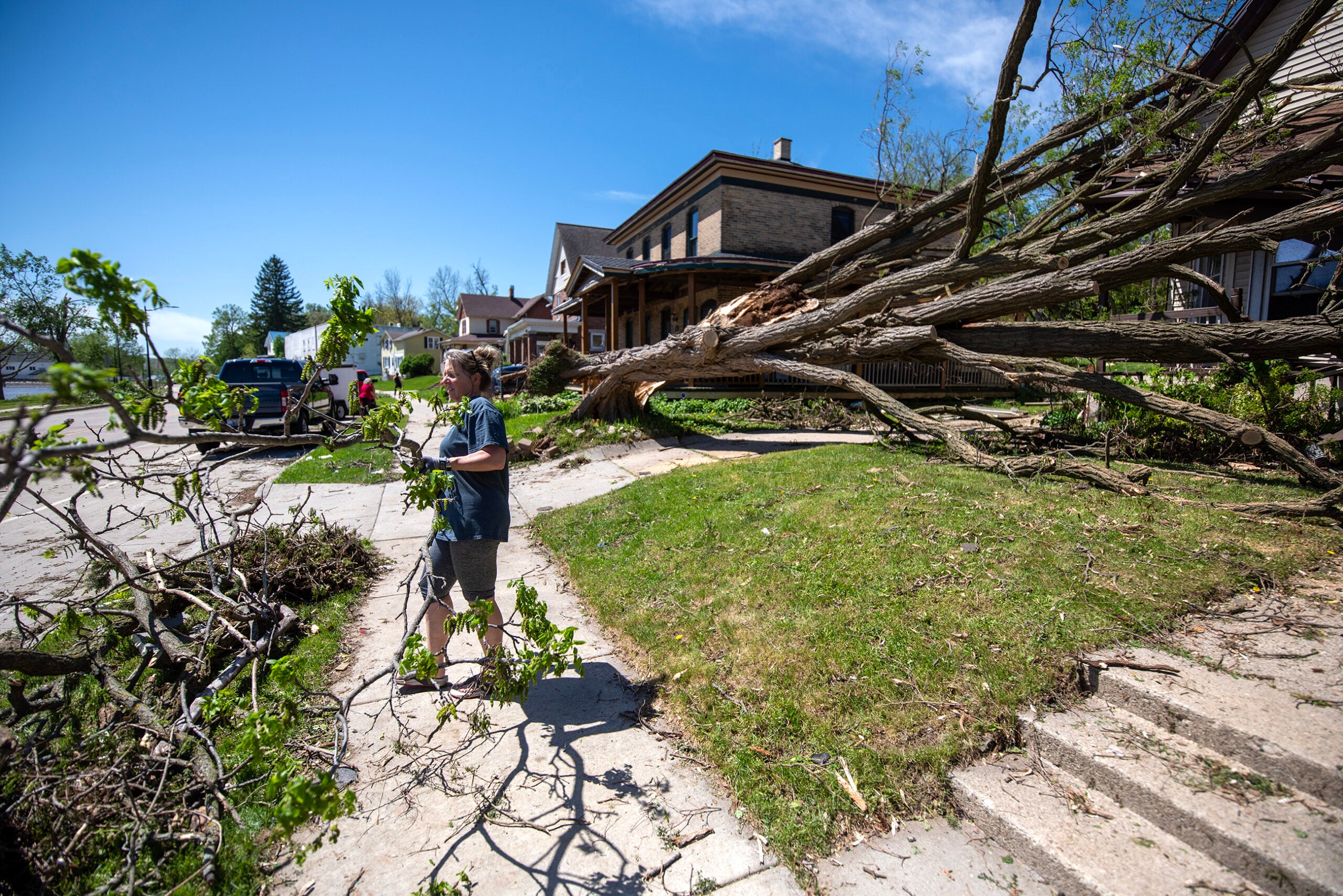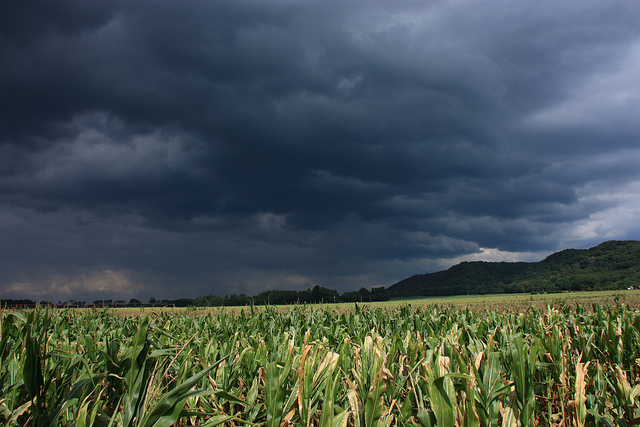A powerful line of thunderstorms spawned at least five tornadoes in western and central Wisconsin Tuesday evening, causing extensive damage across the state.
Investigators with the National Weather Service are still on the ground surveying damage, and more twisters could be confirmed in the coming days.
NWS offices in La Crosse and Chanhassen, Minnesota, confirmed five EF1 tornadoes, with wind speeds between 90 and 105 miles per hour, touched down in Buffalo, Trempealau, Eau Claire, Clark and Marathon counties Tuesday evening.
The storms left more than 25,000 Wisconsinites without power. Two of the tornadoes, in the Village of Edgar and Village of Unity, caused extensive damage to homes and surrounding trees.
News with a little more humanity
WPR’s “Wisconsin Today” newsletter keeps you connected to the state you love without feeling overwhelmed. No paywall. No agenda. No corporate filter.
As of Thursday afternoon, more than 13,000 customers of four different utilities in the state were still without power.
NWS Forecaster Kevin Scow of La Crosse told WPR he has a “strong suspicion” more tornadoes will be confirmed.
He said Tuesday’s weather system — a long line of powerful thunderstorms sweeping from west to east at high speeds — is known as a Quasi-Linear Convective System, or QLCS. It’s the same type of storm that generated eight tornadoes in December 2021.
Tuesday’s line of storms moved fast, between 50 and 80 miles per hour, and the tornadoes they spawned were shrouded in heavy, driving rain.
“And you combine all those factors, they’re moving fast, embedded within the rain, you just don’t see them,” Scow said.
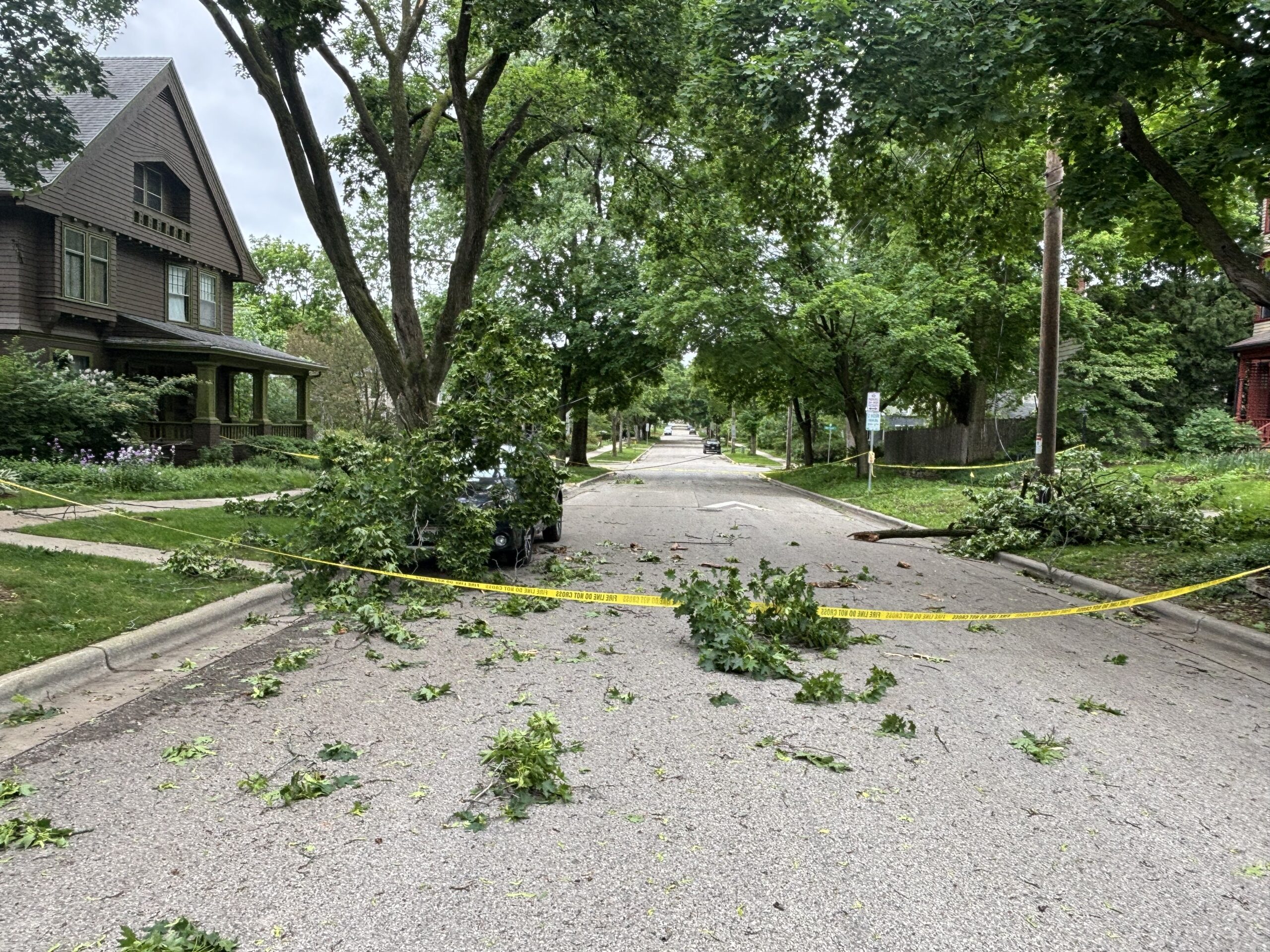
Scow said Wisconsin was lucky, in a way. Had the storms not spread out, he said, the individual cells had potential to produce large and violent tornadoes like those that ripped through Iowa leaving five people dead and at least 35 others injured.
“We were basically looking at a loaded gun with this event and we were just hoping it didn’t actually fire,” Scow said. “Thankfully it didn’t.”
Forecaster Nick Carletta of the NWS office in Chanhassen said they have crews on the ground in Eau Claire and Jackson Counties in search of signs of other suspected tornadoes. He said the storms coincide with the “start of our climatological severe weather season” in Wisconsin.
“A start like this is not a guarantee we’re going to have a busy year. But this is the time for people to make sure they’ve got their preparedness set up and they’re ready for more severe weather to be coming up through the remainder of May and especially as we get into June,” Carletta said.
The NWS is asking residents who suspect their storm damage was caused by tornadoes to document it and send pictures to the weather service’s social media pages or their storm reporting webpage.
Wisconsin Public Radio, © Copyright 2025, Board of Regents of the University of Wisconsin System and Wisconsin Educational Communications Board.

